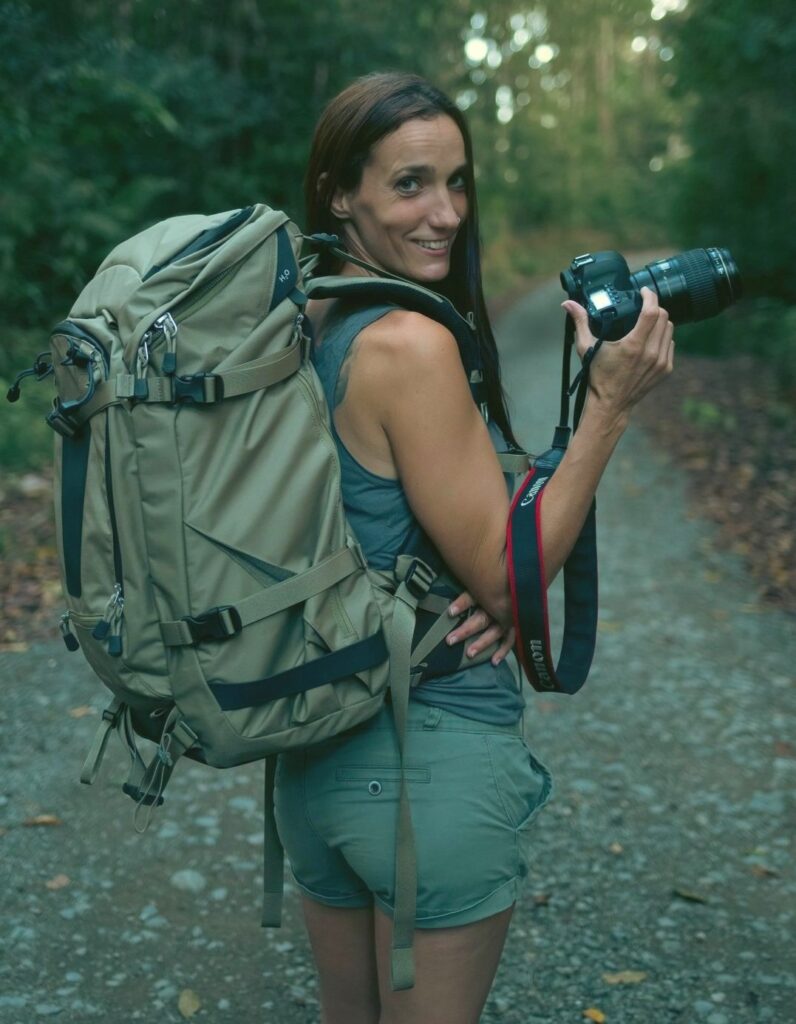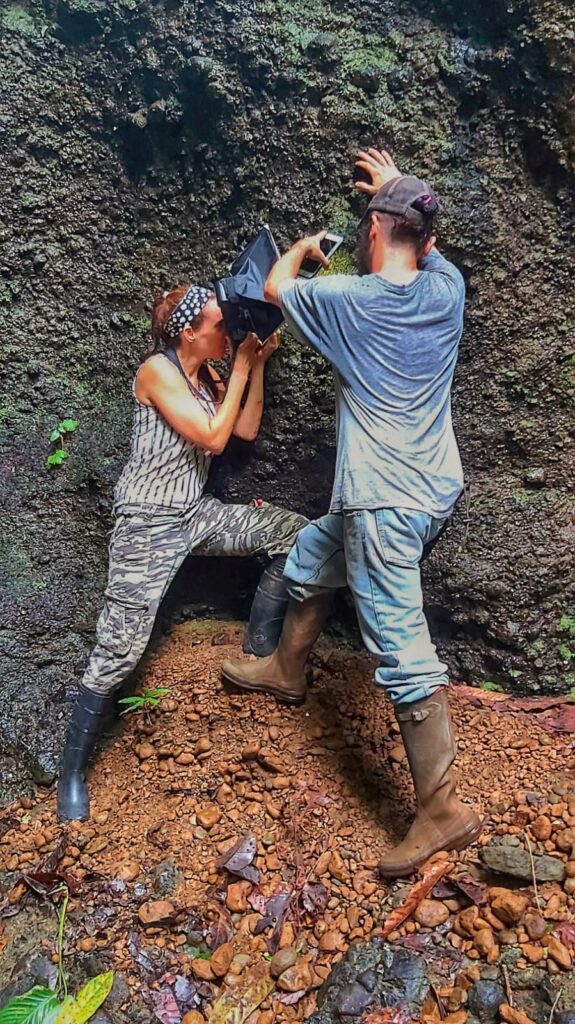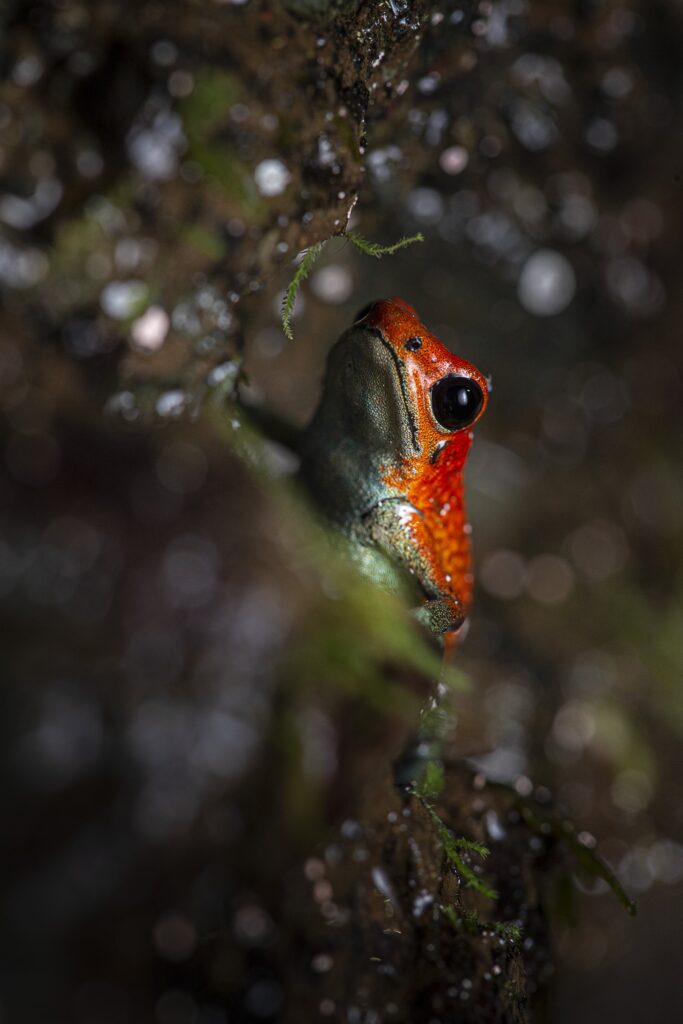Cynthia Bandurek is an Argentinian Conservationist Ecologist, Field-Naturalist, Nature photographer, and wildlife artist. She has worked for more than eleven years at the Natural Science Museum and two years at the Darwinion Botanical Institute in Buenos Aires. In January 2021, Cynthia moved to Costa Rica to pursue work in conservation biology and photography.
She participated in Conservation Projects in Argentina. She is the author of the Book: “The world of small, An approach to the universe of arthropods from an artistic, visual, and evolutionary perspective.”

Web: cynthiabandurek.com
Instagram: @cynthiabandurek_artphotography
Cynthia is Paws Trails Explorers Magazine’ Contributing Editor for South America.
She leads Macro Photography Workshops in Costa Rica.
How old were you when you first discovered your love of nature? What prompted this?
I think the interest in wildlife is innate in me. Since I can remember, I felt attracted to nature and I was concerned about the impact we as humans produce on the environment. Even as a child, I read several books about environmental conservation. I decided to study Ecology first and then have a career as a naturalist. Being a naturalist-led me to get involved in several conservation projects, as it also allowed me to work for more than 11 years in the Museum of Natural Sciences of Buenos Aires, becoming involved in environmental education projects and interpretation trail design. My passion was so strong that I never had doubts about what my personal and professional paths would be.
How long have you been a photographer? What got you interested in photography?
I discovered photography while I was studying for my second career as a field Naturalist in 2007. First, it was a tool to record the animals or plants I was studying in the field. But when I started to shoot, I fell in love with photography and started to learn more and more as a self-taught. At that moment I was studying frogs, so that fact led me to start with macro photography at night, and I realized that macro photography allows us to enter a completely new world that our naked eyes don’t see. I fell in love with photography even more deeply.
What led you to become active in Nature First?
One of the aims of my work was Conservation and raising awareness about the natural world, and in particular of the world of small. The universe of arthropods and little animals that are always underestimated. For me, respect for nature is a natural thing, but sadly I realized that not all photographers think the same way. I always try to transmit the value of nature in all its shapes and sizes, on my own, but having support from an organization like Nature First, can make the message stronger.

What kind of behavior distresses you the most? Do you have an example of this? How would you tie this into the Nature First principles?
Sadly, in the macro photography world, is quite common to see a lack of respect for the subjects. It seems like the size of the subject and the easiness to manipulate them determine the way we behave. It seems like it is wrong for example to manipulate a large mammal, but it seems fine to do it with small arthropods or frogs.
In macro photography, the guidelines are even weaker than in other sorts of photography.
When it comes to photographing arthropods, like insects and spiders, for instance, things go to the extreme. I even found tutorials on the internet on how to kill an insect to do macro photography or extreme macro photography. Yes, crazy, but some people even kill the animals to make an impactful picture. Not so extreme, but others place insects, spiders, frogs, lizards, and snakes in the freezer to lower the metabolism and in that way be able to photograph them easily because they cannot move.
If you had a magic wand that teleported you anywhere, where would you be taking pictures now? Why there?
I already did that my magic wand work in a real way. I moved from Argentina to Costa Rica. But If I have to choose another place in the world, I chose Borneo and Indonesia. For their amazing biodiversity in the small fauna.
If we were to have a bite to eat together, what would we be likely to talk about besides photography and Nature First?
I love biological evolution, biology, ecology, and neurosciences.
A picture you would like to share with us that has a history related to our principles…

You will find a lot of photos of this amazing poison frog (Granular poison frog). A lot of them, are placed in an artificial substrate, made in stage sessions (Set up). Here is an example, of a good result without the necessity of manipulating the animals, maintaining them in captivity, or harming them. If we learn about the behavior of the animals, practice patience, and are open to taking advantage of the opportunities nature gives us, when nature decides to show up, we can do our craft without disrespecting nature.
